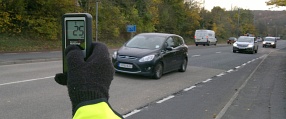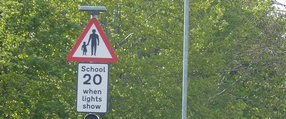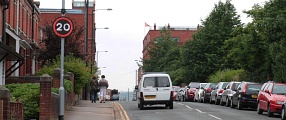Speed Indicator Device (SID)
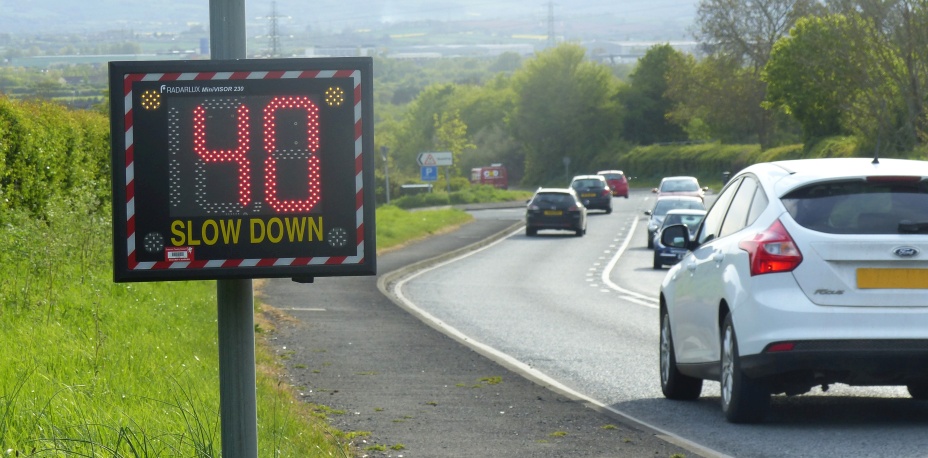
Speed Indicator Devices (SIDs) are a variation of standard vehicle activated signs which can be moved around easily. They flash the current speed limit (e.g. 30, 40), if a vehicle approaches which is exceeding this speed.
The signs run on batteries, and are attached to any existing post by the side of the road. They are typically left in place for one week, after which they are taken away to be recharged.
In an area where speeding can be a problem, SIDs remind drivers of the speed limit by standing out from normal signs. They could help to break the habit of drivers who consistently use excessive speed.
Disadvantages
- The signs could be vandalised
- Will not be as effective as other permanent treatments
Restrictions
- SIDs should be placed on a relatively straight stretch of road to allow the radar device to accurately judge the speed of approaching motor vehicles
- There must be a suitable post at the location to affix the sign to
- Only used at locations where the speed limit is 20, 30 or 40 mph
There's also some general restrictions to note for all schemes
How to get a SID
Applications for SIDs must be made through your local parish/town council. Applications are not accepted from individual members of the public.
Somerset County Council will then check the site meets the current criteria by collecting speed statistics.
There is more information on Somerset County Council's website.
Advantages
- Can be installed where there is no electricity connection, on any existing post (normally a sign post)
- Relatively cheap
- Can be be targeted at specific locations where there is an issue
- Can be used all around the County on a rota basis to give a consistent message
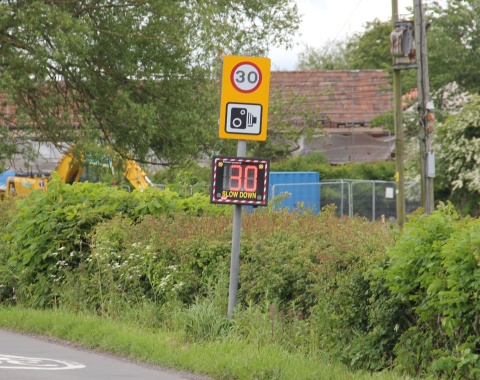
Effectiveness
SIDs do not have any effectiveness information available, however their function is similar to standard vehicle activated signs.
Standard vehicle activated signs on 30 or 40 mph roads reduce accidents by 34%, and they reduce vehicle speeds by between 2.6 to 7.1 mph, however, bear in mind that standard vehicle activated signs are larger, and possibly brighter than the SIDs shown here.
Advanced information
Comparison notice
SIDs were compared to standard VASs above for effectiveness information.
The Advanced information for standard VASs appears below.
Accidents at Vehicle-activated signs
Accident reduction figures for roundel signs are from a medium quality study from TRL into VASs (Winnett & Wheeler, 2002). Whilst the study examined VASs at a range of locations using before/after methodology, a more detailed analysis was also carried out in Norfolk at 21 VAS sites using a modelling technique based on eleven years accident data (1990-2000). To reach the roundel accident reduction figures, the model predicted the number of accidents within Norfolk if no VASs had been installed, compared with the observed number of accidents with the VASs. This methodology should provide a reasonably accurate indication of safety effects, however there is no explicit implementation of long term trend correction for accidents which may offset effects by a small, but significant amount.
Speeds at Vehicle-activated signs
Similarly, vehicle speeds at VASs are based on the same TRL study (Winnett & Wheeler, 2002). The methodology is of medium strength - the data were collected using a covert and accurate technique over a long time period, however there was a small variance in distance between data collection and the VASs. Data were collected before sign installation, within one month after installation, and after one year. Overall, the data provides a strong indication of VAS effects, despite some flaws. The data provided for both 40mph and 50mph sites was not included, as there were too few data points for a reliable analysis.
References
Jamson, S., Lai, F., Jamson, H. (2010) Driving simulators for robust comparisons: A case study evaluating road safety engineering treatments. Accident Analysis and Prevention 42 pp. 961 . 971.
Winnett, M. & Wheeler, A. (2002) Vehicle-activates signs - a large scale evaluation (TRL548). Transport Research Laboratory. Crowthorne, UK.

